The topic on jack studs and headers brought back another question that pops up from time to time at work. Apologies if it was debated before my arrival on the forum.
Header immediately above the opening (short studs above header), or tight underneath the top plates (short studs below header)? Some guys swear that it matters, I don’t think it does. Opinions?
Wally

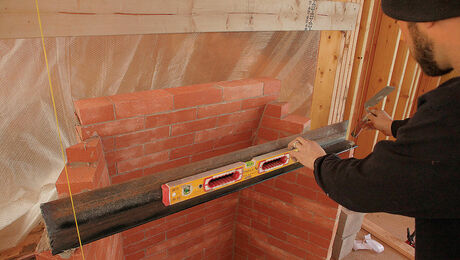


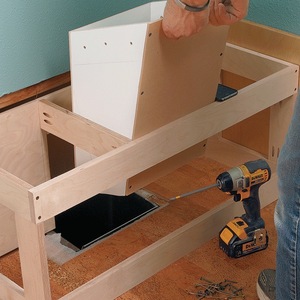
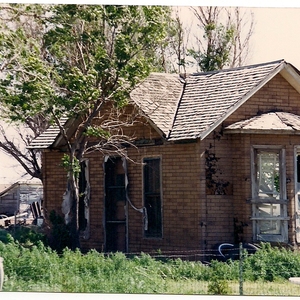



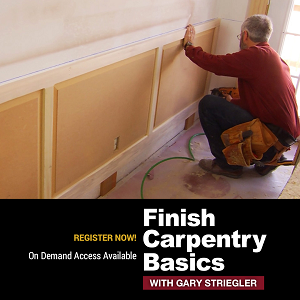




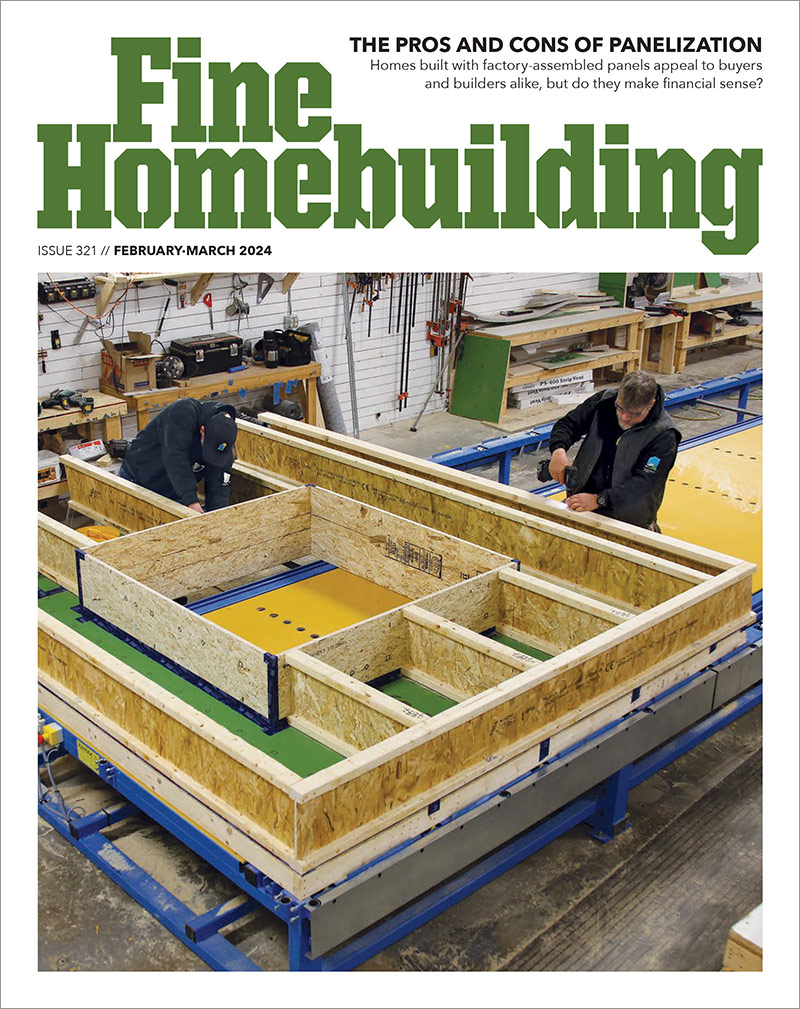
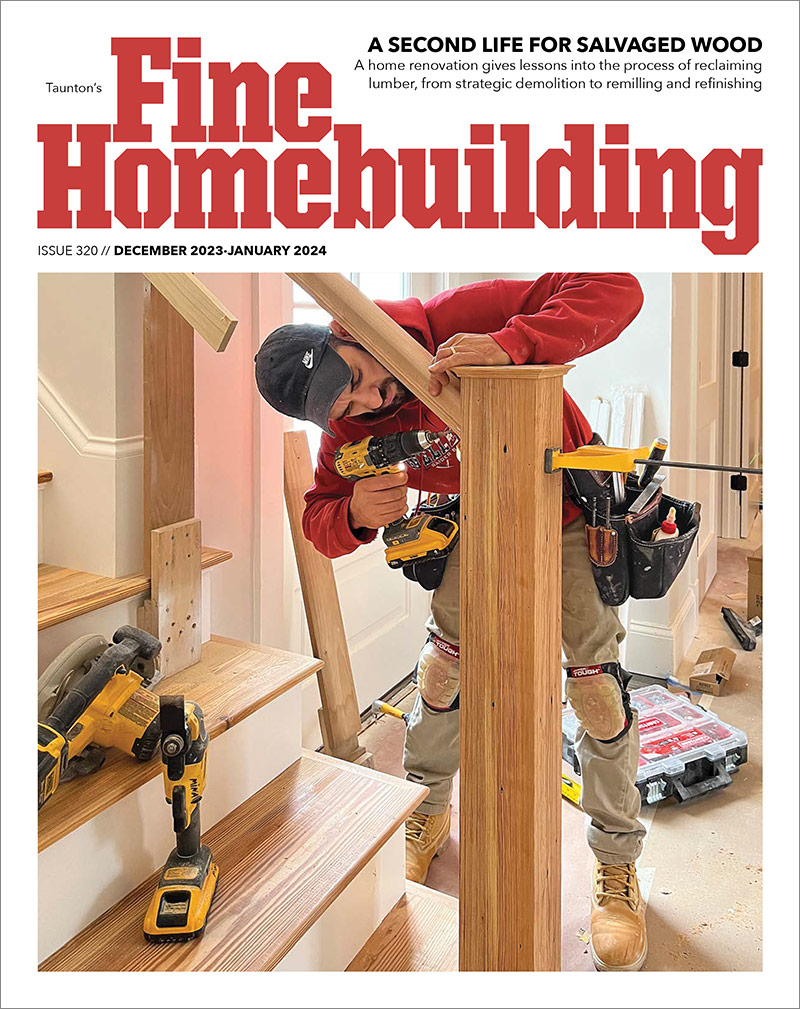


Replies
Interesting question. It seems that it its standard to put the header right above the opening with cripples above the header.
Just recently, (Was it here on BT?) I saw the headers placed above the top plate in the rim joist for the second floor. This seemed to have several advantages.
Al Mollitor, Sharon MA
Have seen all walls with 92 5/8 studs & 2x 12 headers tight to top plate. IMHO I don't think it makes a difference with other header & wall sizes
Most houses that I see have the header down. But I can see some possible advantages to having the header up.
If you remodelled and put in larger windows, it would be easier with the header up. (Unless you went wider, of course)
I wonder if it would cause less problems with lumber shrinkage. Window manufacturers recommend that you don't nail the top flange tight in orfer to allow for wood movement. That shouldn't be a problem with the header up, though.
Don't know if it would help with drywall cracks around windows or not.
Everyday I beat my own previous record for number of consecutive days I've stayed alive.
Back in the 80s, the AWA (through their WoodBook) was advocating using the header all the way up (just uder the top plate), and a 2x header. You were to only put in cripples if the space in between was 12" or more.
This was supposed to save wood over all on a "typical" framing job. They were also advocating a 3-stick corner for better wood use and the ability to insulate it better.
Having tried to get rock in over some more-than slap-dash headers (think made from the cupped & twisted cut off 2x8 & 2x10 on site), I kind of like a header against the top plate.
Sly,
Everyone does things different as you can see. On walls above 8' I always cut header jacks (we call then liners) at 81-1/2" and set my headers right on top and then put cripples above. I personally think it's stronger when you have a 6' 8'10' or 12' door that the headers should be right above the door instead of having 2x4's or 2x6's on a flat.
Joe Carola
Edited 11/10/2004 7:18 am ET by Framer
Like you, my personal method is to have the header down at the opening rather than up under the top plates, but that's more to do with training than anything else. They taught us to do it this way at school, so I do. I can't think of any reason not to do it the other way, but I don't.
On the same track, I was always taught to cut my cripples (aka jack studs or trimmer stud, or liners as you call them) at the same height as the specified rough opening. A horizontal sill made of the same size material as the studs is nailed up underneath the header to make the opening the correct size after the bottom plate has been cut out. Some people like to fur their header out to wall thickness with plywood and/or extra header plies, then adjust the cripple length to account for the bottom plate. Both systems work fine (although I think there are clear advantages to mine). But some guys were trained differently and so they will always do what they believe is the "proper" way. We might embrace high tech in many parts of our livesm, but there is still a lot of traditionalism out there on the job site.
WallyLignum est bonum.
Sly,
I always use a 2x4 or 2x6 cap as we call it nailed to the bottom of a header. For a 92-5/8" precut it gives you the right height for the door openings and window openings and keeps everything in line. Some framers would use all 2x12 but then they would go back and pack out the bottom later. Some houses or additions we do the plans call for all 3-1/2" x 9-1/2" paralams.
I thought 2-2x10's with a 2x4 cap on the bottom was the way everyone did it until I moved to Cape Cod back in 1984 and the precuts were 88" and we used plywood in between the headers. Like you said some guys were trained differently and have different systems that both work and living in Cape Cod is also when I learned how to face-nail wall studs and sheath the walls and then raise them but here we toe-nail but both systems work.
Joe Carola
Toenail studs, huh? I only do that if it is infill framing working to exisitng ceiling as in a reno. I find it more efficient to sheath the wall while it is on the ground - most of the time. There are times when you would rather have some flexibilty in the system.
In the winery pictured below, an apprentice and I pre-fabbed all the wall panels on a 30' x 30' framing floor while the rest of the crew did the concrete. The walls are 2x6 and 2x8 framing, 20 ft to underside of truss. We did all the blocking (2 rows) and sheathing right there on the ground. We flew everything in with an 80-ton crane in under two days. There were or two panels that needed some sawzall adjustments, but on the whole it worked well. Time was of the essence as the building permit arrived mid june and the grapes were arriving end of Sept. We made it, and they had 4 walls and a roof when the crush started, but as you can see by mid winter not all of it was finished - small details like stucco for instance.
WallyLignum est bonum.
the headers should be right above the door
Hmm, always seemed stiffer to double the kings (after through-nailing the header to the first pair). It's probably just that--perception.Occupational hazard of my occupation not being around (sorry Bubba)
Sly, we typically hold headers up tight on most of our walls.
On 8' ceilings, there typically isn't any room to do other wise, unless it's a very light load and we use 2x6 headers....which is rare. We also do all our "packing down" between the trimmers. I think it's structurally weak to put the fillers in bearing on the trimmers.
On 9' ceilings, we hold the headers up tight and frame down to the correct header height. We do this because occasionally we've had to change the window height and this makes it very easy to adjust upward. Garage service doors are notorious for their upward mobility because often we don't know if there is going to be a curb...or no curb. In fact, we just finished a house that we had to raise the service door because he added the curb.
On very rare occasions, the header might be part of the structural support for the exterior brick load. Typically in situations like this, it will be noted on the plans. There will be a note specifying a particular steel lintel, with holes, to be attached with lag bolts. In this situation, you obviously should place the header at the appropriate location to help support that brick.
Warning! Be cautious when taking any framing advice from me. Although I have a lifetime of framing experience, all of it is considered bottom of the barrel by Gabe. I am not to be counted amongst the worst of the worst. If you want real framing information...don't listen to me..just ask Gabe!